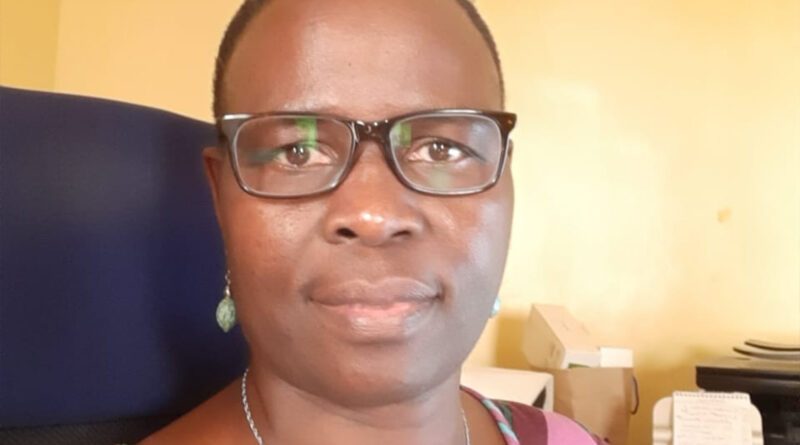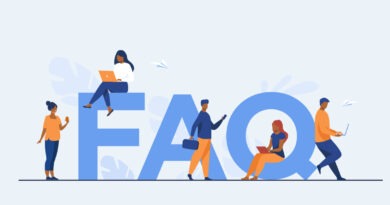5-Part Interview Series with Digital Book Platforms Founders in Africa.
We are pleased to introduce our five-part “Conversation Series” with African digital founders innovating in publishing. These innovators are enhancing access to books on digital platforms and helping publishers reach a wider audience. The market size of e-publishing in Africa is projected to reach US$1,250 million by the end of 2024 (Statista). Each segment will cover their platforms, contributions to the literary landscape, support for brick-and-mortar publishers, and opportunities for emerging authors.
Our third conversation is with Dorcas Wepukhulu Partner Development Coordinator at African Storybook, a literacy organisation promoting access to picture storybooks in the languages of Africa for children’s literacy, enjoyment and imagination.
What unique features or aspects set your digital book space apart from other platforms in the literary world?
The African Storybook (ASb) is Saide’s ground-breaking initiative that aims to address the challenges that young African children face in developing literacy, partly, due to the lack of access to suitable and enjoyable storybooks in children’s home languages. The limited publishing of storybooks for young children in African Languages contributes to the high cost of storybooks, making them unaffordable for vulnerable and marginalised communities. This is a vicious cycle. ASb provides free, openly licensed storybooks for children across Africa in the languages of Africa. The ASb model stimulates and encourages local agency by putting digital tools in the hands of the people, including those whose languages are endangered or under-resourced, to give voice to their languages through publishing storybooks, thus, saving them from the risk of extinction. Using these tools, they create and curate storybooks on topics that are relevant to them and translate and adapt others in ways that ignite meaningful literacy development in their contexts. The approach has contributed to the platform’s diverse and rich storybook collection, often originated in local languages demonstrated by the growing number of these languages represented on the website. ASb also supports teachers and parents in using the storybooks effectively to promote reading for pleasure, by providing guidelines, training, and resources on how to select, read aloud, and use storybooks with children in meaningful and playful ways. By offering hundreds of storybooks in different languages, genres, and levels of difficulty, ASb empowers children to choose books that match their interests, preferences, and reading abilities. The platform also offers educators, parents and caretakers support to effectively engage children with both digital and print-ready storybooks. It also enables these adults to make collections (anthologies) based on the reading level, theme, language or the literacy abilities of the children they support.
Could you share how your platform collaborates with publishers, and what advantages publishers gain from working with you?
As already mentioned, ASb publishes free storybooks under the Creative Commons (CC-BY) License. This means anyone can freely download, adapt and use the storybooks with attribution to ASb. We believe open licensing enables growth of readership potentially expanding the market for publishers. For young children to grow up developing a reading culture, they need to access affordable and interesting reading materials in the languages with which they are most familiar, as well as culturally appropriate materials in the language of wider currency. When communities enjoy and value reading, they are also prepared to invest in buying reading material. We at ASb believe that with our community partnerships and open license publishing model, we can significantly contribute to developing an active reading culture.
When curating content for your platform, what factors guide your selection process?
We are guided by the following considerations: When creating and curating content in collaboration with a partner for a specific programme, we do this in response to the need/context of the target audience under the programme. We ask the critical question: What is a good and appropriate storybook for children? This question guides us to create and curate storybooks (often originated in local languages) that children find enjoyable, entertaining, fun, interesting and meaningful to make them want to read more. We guide writers to create and curate storybooks with a child’s world in mind, not necessarily ‘real’ or realistic, but meaningful stories with well-connected ideas and consistency. We remember to create and curate stories with a variety of new and familiar words – (vocabulary + sentences), stories that are familiar (content relates to children and is age appropriate in length) – and those with new ideas and experiences. We include stories with a good story arc, including tension and conflict appropriate for child readers. We ensure to publish well-written stories to model good literacy (structure: grammar. punctuation and spelling).
Maintaining content quality is crucial. How do you verify the authenticity and quality of the books featured on your platform?
We monitor all new storybooks and implement our take-down policy by unpublishing and deleting a storybook if we ascertain that the storybook (text or images or both) isn’t the author’s original work. The content (text and images) and length are inappropriate for children. Also, we and our language partners, use a special checklist to quality assure translations. Our storybooks are in four categories to help people know which ones have been quality assured: Storybooks ASb approved (those checked); Storybooks Collection (checked); Storybooks website (storybooks created on the website or translations not yet checked); and Storybooks App (those created on the website, not yet checked).
Could you elaborate on the support services or tools you offer to authors and publishers within your ecosystem?
We run story development workshops for unpublished authors, taking them through the process: story idea – story draft – read story out loud – check and edit story – write out edited story – decide on level and story page breaks – read aloud and check again – editorial and publishing (based on a checklist). We work closely with artists on each story, giving them feedback to improve their skills. Upcoming authors can use the ASb website and Story Maker App (downloadable for free from Play Store and AppStore) to hone their publishing.
In terms of author development, how do you assist writers in growing their readership and establishing their brand?
Some authors who have contributed to ASb storybook collection, have asked us to recommend them to other initiatives that need their services. They also can list all of the storybooks published on our website that they originated, as evidence of their skills and their ability to publish.
Can you tell us about any specific publishing services or collaborative opportunities you extend to authors?
As explained in # 5 about, we support authors to write professionally, observing good and acceptable publishing standards.
Ensuring fair treatment for authors and publishers is crucial. How do you safeguard their rights and manage royalties?
When we work with partners through story development processes, authors and artists recruited to contribute manuscripts and artwork, sign a contract agreeing to receive a once-off payment for their contribution upon completion of the work.
Could you outline the various revenue models your platform employs, such as commissions or subscription-based models?
Our work is currently entirely funded from philanthropic grants and the crowdsourcing model of storybook creation. We do not have a subscription model as content is openly licensed and free to use.
When it comes to revenue sharing, how do you allocate earnings between publishers and authors?
We don’t have a revenue sharing model because all ASb content is currently openly licensed and free to use.
From your perspective, how does your platform contribute to the evolution of African literature and its impact?
ASb enables teachers and parents to access, create, translate, and adapt storybooks online, using a simple and user-friendly platform. They are not just consumers, but active contributors to the resources they use.
ASb contributes to African literature in the languages that would never get a chance to be published. ASb motivates and enables under-represented language community members – in the way that it happened with the Thok Nath (Nuer) – to develop the orthography of their language because they want to have written resources in it. Once this is in place, community members can continue to publish other genres of literature in their language. ASb offers children the unique opportunity to tell their stories from their perspective by digitising their storybooks using the Maker App. This can enhance their creativity, imagination, confidence, and motivation to read. ASb is a valuable resource for promoting reading for pleasure among young children in Africa, supporting their well-being and literacy development. ASb enables unpublished (and those who have beautiful stories to share), to publish and be heard.
In this digital world, and as mobile devices become more affordable and connectivity penetrates even the places that have largely remained inaccessible, more people can enjoy reading free storybooks.




